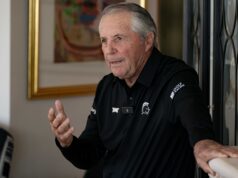Henrik Stenson’s return to the DP World Tour marks yet another chapter in golf’s increasingly complex tug-of-war between tradition and disruption. The 49-year-old Swede, once a mainstay of European golf and a former Open Champion, is returning to the tour that defined much of his prime, but not without paying a steep price, both financially and reputationally.
A Price Paid in Pounds and Prestige
Stenson, who had cast his lot with LIV Golf in 2022, joined the Saudi-backed circuit as a co-captain of the Majesticks shortly after being named European Ryder Cup captain, a title he lost just weeks later. That move, symbolic of the broader exodus that shook golf’s foundations, led to swift suspensions from both the PGA Tour and DP World Tour, and ultimately cost him dearly. This month, it was confirmed that he has paid over £1 million in outstanding fines and served a quiet, undisclosed suspension, the conditions necessary to regain eligibility under the “legends” exemption.
LIV’s Safety Net is Disappearing
Bunkered was first to report that Stenson was “plotting” his return, and now that plot seems well underway. The DP World Tour has confirmed that he is indeed set to return for the 2025 season, as LIV Golf appears to be stepping back from covering its players’ disciplinary costs. Stenson’s failure to retain his LIV card, finishing a lackluster 52nd in season-long points, all but cemented the need for a new direction.
A World Tour Return That Signals More Than Redemption
Yet this isn’t just about Stenson. It’s about the shifting allegiances, the blurred loyalties, and the price of rebellion in professional golf. LIV was once a refuge for players seeking freedom and funding, but with its blanket protections beginning to thin, veterans like Stenson must now weigh prestige and history against paychecks.
Stenson does have a route back to LIV, through the Promotions event in January, but this return to the DP World Tour suggests a deeper reconciliation. Perhaps it’s strategic, or maybe symbolic. For a player once at the center of Europe’s Ryder Cup efforts, this homecoming brings a quiet but weighty resonance. The prodigal son may not be cheered by all, but his return marks a significant signal: in golf’s great realignment, some bridges, even scorched ones, can still be crossed.




